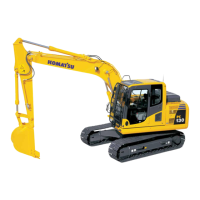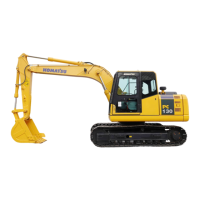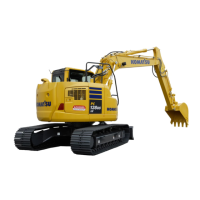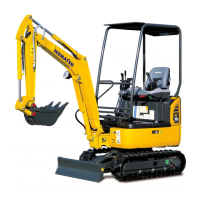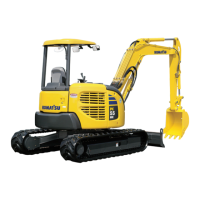0-4
PC130/150LGP-6K ENG
3.1 INTENDED USE
This Komatsu HYDRAULIC EXCAVATOR is designed to be used mainly for the following work:
• Digging work
• Smoothing work
• Ditching work
• Loading work
See the section "12.15 WORK POSSIBLE USING HYDRAULIC EXCAVATOR" for further details.
3.2 FEATURES
• This Komatsu HYDRAULIC EXCAVATOR is equipped with various controls based on an advanced electronics
system.
° The monitor panel greatly facilitates daily maintenance and self-diagnosis.
° Working mode, active mode and travel speed are selectable.
° Digging and lifting force can be increased by light-touch control.
(For details, see operaton section).
• Adjustable wrist control levers make operations smooth and easy.
• Fresh filtered air heater assures comfortable operaton.
• Low noise level and smart urban-style design and coloring.
• Superb operating performance provided by powerful engine and high-performance hydraulic pumps.
• Low fuel consumption controlled by an electronic control system provides an environment-friendly machine.
3.3 BREAKING IN THE MACHINE
Your Komatsu machine has been thoroughly adjusted and tested before shipment.
However, operating the machine under severe conditions at the beginning can adversely affect the perform-
ance and shorten the life of the machine.
Be sure to break in the machine for the initial 100 hours (as indicated by the service meter).
During breaking in:
• Idle the engine for 5 minutes after starting it up.
• Avoid operation with heavy loads or at high speeds.
• Avoid sudden starts, sudded acceleration, sudden steering and sudded stops except in cases of emergency.
The precautions given in this manual for operating, maintenance and safety procedures are only those that
apply when this product is used for the specific purpose. If the machine is used for a purpose that is not listed in this
manual, Komatsu cannot bear any responsibility for safety. Alle consideration of safety in such operations is the
responsibility of the user.
Operations that are prohibited in this manual must never be carried out under any circumstances.
3. INTRODUCTION
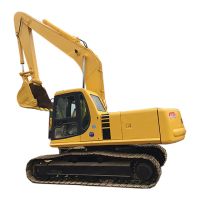
